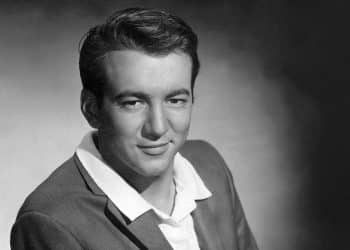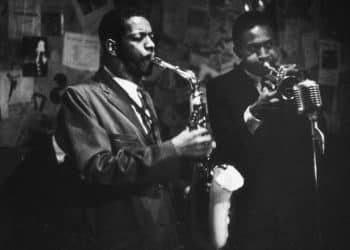Thelonious Monk was one of the most innovative and influential figures in the history of jazz, known for his unique style and innovative approach to improvisation. With his unconventional phrasing and use of dissonant intervals, Monk pushed the boundaries of the genre and challenged the listener’s expectations, creating music that was both sophisticated and accessible.
Over the course of his career, Monk composed and recorded a wide range of songs that have become beloved classics of the jazz repertoire. From the driving swing of “In Walked Bud” to the enigmatic mystery of “Misterioso,” and the emotional depth of “Ask Me Now,” Monk’s music remains a shining example of the possibilities of jazz, blending elements of tradition and innovation in exciting and unexpected ways.
In this list of the 10 Best Thelonious Monk Songs of All Time, we’ll explore some of his most iconic and enduring compositions, celebrating the unique talent and vision of one of jazz’s most beloved and influential figures.
1. ‘Round Midnight
“‘Round Midnight” is a timeless jazz standard composed by Thelonious Monk, with lyrics by Bernie Hanighen and Cootie Williams. First recorded in 1944, the song features a melancholic melody and moody chord changes that have captivated audiences for decades. Monk’s signature style is on full display, with his use of dissonant intervals and unusual rhythms creating a sense of tension and intrigue. The lyrics speak to the loneliness and longing of the late-night hours, with lines like “It begins to tell, ’round midnight, midnight, I do pretty well, till after sundown, suppertime I’m feeling sad.” The song’s evocative melody and emotional depth make it a standout in Monk’s repertoire and a defining moment in the history of jazz.
2. Straight, No Chaser
“Straight, No Chaser” is a hard-driving jazz composition by Thelonious Monk, first recorded in 1951. The song features a catchy melody and an infectious groove, with Monk’s piano playing at the forefront. The title refers to the simple, straightforward nature of the song’s structure, with no complex chord changes or intricate arrangements. The song’s energetic rhythm section and swinging horn lines create a sense of excitement and joy, with Monk’s piano solos adding moments of improvisational brilliance. The song’s popularity has endured over the decades, with numerous artists covering it and using it as a showcase for their own improvisational skills.
3. Blue Monk
“Blue Monk” is a classic jazz composition by Thelonious Monk, first recorded in 1954. The song features a catchy, bluesy melody and a swinging rhythm section, with Monk’s piano at the forefront. The song’s simple yet effective chord changes and bluesy feel make it a favorite among jazz musicians and fans alike. The song’s title refers to the blue notes that are prevalent in the melody, giving it a sense of melancholy and emotional depth. The song has become an enduring standard, covered by countless artists in a variety of styles, and a testament to Monk’s ability to blend elements of the blues with the sophistication of jazz.
4. Epistrophy
“Epistrophy” is a jazz composition by Thelonious Monk and Kenny Clarke, first recorded in 1942. The song features a quirky and angular melody, with Monk’s piano leading the way. The song’s title refers to the repeating phrase that punctuates the melody, giving the song a sense of urgency and unpredictability. The song’s unconventional structure and use of dissonant intervals make it a favorite among jazz musicians and a defining moment in Monk’s career. The song’s playful and inventive qualities have made it a staple of the jazz repertoire, and it remains a challenging and rewarding composition for musicians to play to this day.
5. Ruby, My Dear
“Ruby, My Dear” is a beautiful jazz ballad composed by Thelonious Monk, first recorded in 1947. The song features a delicate and romantic melody, with Monk’s piano playing and the soulful horn lines creating a dreamy atmosphere. The song’s title refers to a woman who was a friend of Monk’s and the inspiration for the song. The song’s slow tempo and emotive quality make it a favorite among jazz musicians and fans, with its haunting beauty and introspective mood capturing the essence of Monk’s style. The song has been covered by many artists over the years, and its enduring popularity is a testament to its timeless quality and emotional depth.
6. Well, You Needn’t
“Well, You Needn’t” is a classic jazz composition by Thelonious Monk, first recorded in 1944. The song features a catchy and upbeat melody, with Monk’s piano playing and the swinging rhythm section creating a joyful and exuberant atmosphere. The song’s title refers to the idea that the listener doesn’t need to conform to conventional musical norms, with Monk’s use of dissonant intervals and unconventional chord changes creating a sense of freedom and spontaneity. The song has become a staple of the jazz repertoire, with its infectious energy and sense of playfulness making it a favorite among musicians and fans alike.
7. Misterioso
“Misterioso” is a classic jazz composition by Thelonious Monk, first recorded in 1948. The song features a catchy and hypnotic melody, with Monk’s piano playing and the driving rhythm section creating a mysterious and atmospheric vibe. The song’s title refers to the sense of enigma and intrigue that the music creates, with its unconventional structure and use of dissonant intervals. The song has become a favorite among jazz musicians and fans alike, with its sense of mystery and improvisational opportunities making it a staple of the jazz repertoire.
8. In Walked Bud
“In Walked Bud” is a classic jazz composition by Thelonious Monk, first recorded in 1947. The song features a catchy and swinging melody, with Monk’s piano playing and the driving rhythm section creating an energetic and joyful atmosphere. The song’s title refers to the nickname of a friend and fellow jazz musician, Bud Powell, who was known for his virtuosic piano playing. The song is a tribute to Powell’s talents and influence, with Monk’s use of bebop-inspired phrasing and intricate harmonies showcasing his admiration for Powell’s style. The song has become a favorite among jazz musicians and fans, with its infectious energy and sense of celebration making it a staple of the jazz repertoire.
9. Brilliant Corners
“Brilliant Corners” is a complex and challenging jazz composition by Thelonious Monk, first recorded in 1956. The song features a complex and angular melody, with Monk’s piano playing and the intricate horn arrangements creating a dense and layered sound. The song’s title refers to the idea of achieving a state of perfection, with Monk’s use of unconventional harmonies and rhythms challenging the listener’s expectations and creating a sense of unpredictability. The song has become a favorite among jazz musicians and fans, with its virtuosic playing and intricate arrangements showcasing the best of Monk’s unique style and vision.
10. Ask Me Now
“Ask Me Now” is a classic jazz ballad composed by Thelonious Monk, first recorded in 1951. The song features a delicate and emotive melody, with Monk’s piano playing and the sparse rhythm section creating a gentle and introspective mood. The song’s title refers to the idea of being open and vulnerable, with Monk’s use of space and simplicity creating a sense of intimacy and honesty. The song has become a favorite among jazz musicians and fans, with its timeless beauty and emotional depth capturing the essence of Monk’s style.








